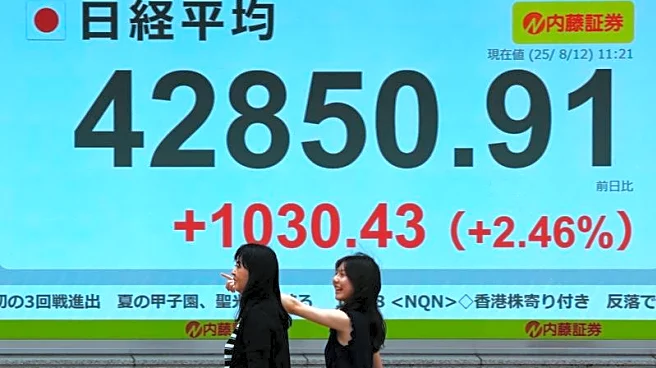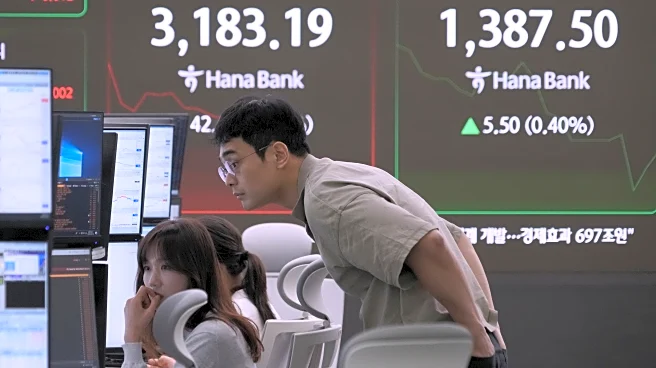Rapid Read • 8 min read
The U.S. manufacturing sector has shown significant improvement, with the August 2025 Markit Manufacturing PMI rising to 53.3, surpassing the expected 49.5. This marks the highest level since May 2022, indicating a robust recovery in factory activity. The increase is attributed to stronger-than-expected growth in production, new orders, and employment. This development suggests a potential shift in investor sentiment towards cyclical sectors such as industrials and materials, which have underperformed in recent years. The data also highlights a divergence in sector positioning, with defensive sectors like consumer staples and utilities having dominated since 2020. However, the renewed manufacturing strength could lead to a rotation into industrials and materials.
AD
The surge in the PMI is significant as it suggests a potential turning point for the U.S. manufacturing sector, which could influence investment strategies and sector rotations. Historically, industrials, materials, and consumer discretionary sectors have outperformed during manufacturing upturns. The renewed strength in manufacturing could catalyze a shift away from defensive sectors towards more cyclical ones. However, challenges such as inflationary pressures, tariffs, and supply chain bottlenecks remain. These factors could delay a full cyclical rebound until demand stabilizes and policy shifts occur. Additionally, policy divergence, particularly between the U.S. Federal Reserve and the European Central Bank, could impact capital flows and create volatility in global markets.
Investors should monitor the Federal Reserve's upcoming rate decision, with a high probability of a rate cut, which could affect sectors like financials. A balanced approach to sector rotation is advised, with financials and essentials-driven equities being well-positioned. Emerging markets may also benefit from a weaker U.S. dollar and shifting inflationary dynamics. Active management will be crucial in navigating the risks of policy divergence and structural shifts. As the economic landscape evolves, agility and diversification will be key to capturing opportunities and mitigating risks.
The PMI's strength could spur capital flows into emerging markets, where central banks are more aggressive in cutting rates. This could benefit EM equities and commodities, particularly in sectors with pricing power. Active management becomes increasingly valuable in this fragmented landscape, offering opportunities for alpha generation in markets like Japan and small-cap equities.
AD
More Stories You Might Enjoy












